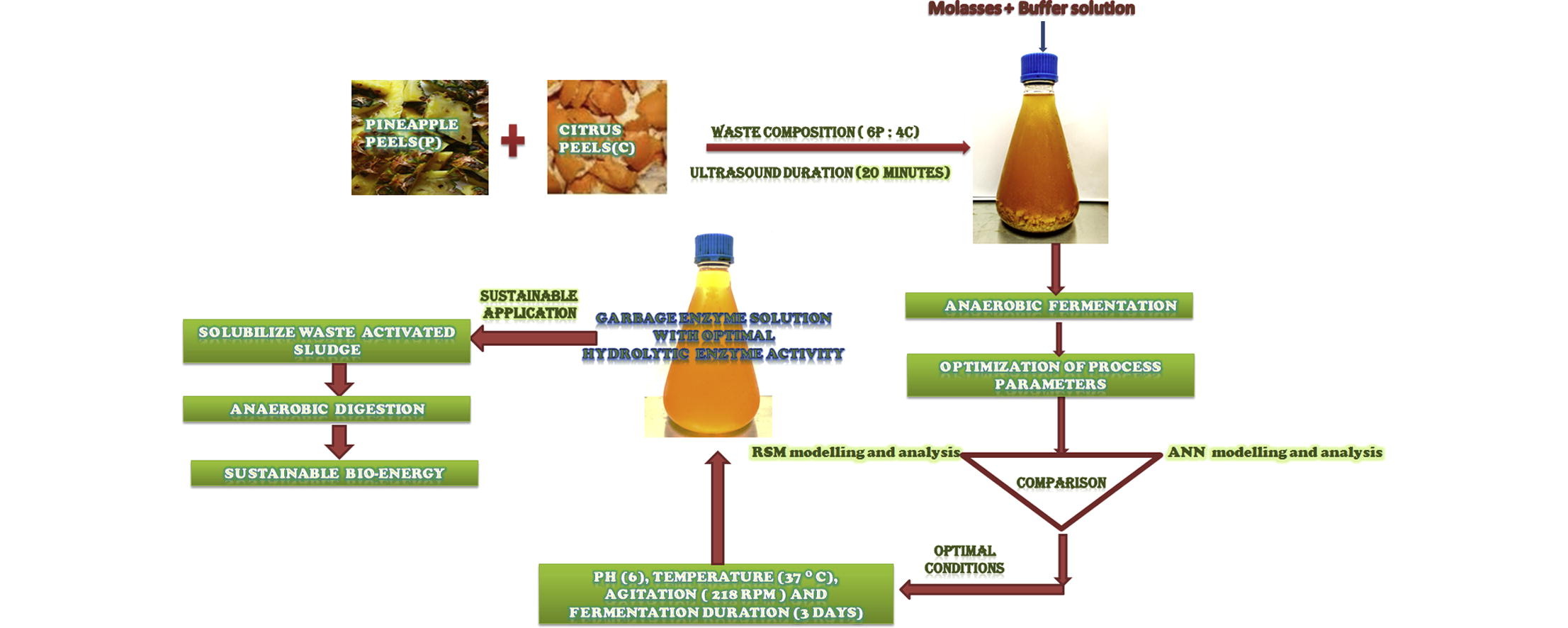WHAT IS ECO/GARBAGE ENZYME?
Ecology (from Greek: οἶκος, "house" or "environment"; -λογία, "study of") is the branch of biology which studies the interactions among biotic organisms and abiotic components in their environment.
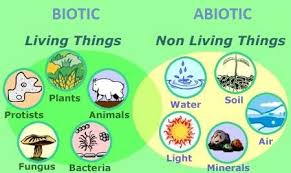
In biology and ecology, abiotic components/factors are non-living chemical and physical parts of the environment that affect the functioning of entire ecosystems and living organisms. Abiotic factors and the phenomena associated with them underpin all biology.
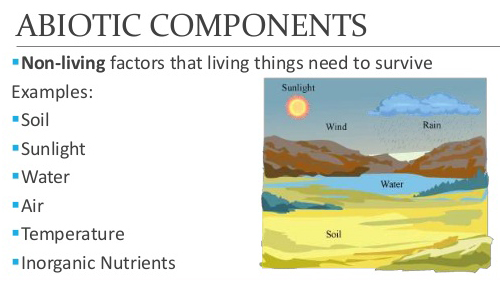
Carbohydrates, lipids, proteins and vitamins have carbon in their structure, making them organic nutrients. Water and minerals do not, so they are inorganic nutrients.
Huge economic losses emanating from poor postharvest management practices and growing awareness about the benefits of processing of perishable commodities has led to an increase in the processing of horticultural commodities.
This generated a huge quantity non-edible parts of fruits and vegetables, such as peels, pods, seeds, skins, etc., which accounts for 10–60% of the fresh produce total weight.
Fruit processing waste (FPW) industries contribute over 500 million tonnes of waste worldwide. The peels, pomace and seed fractions of FPW could potentially be a good feedstock for recovery of bioactive compounds such as pectin, lipids, flavonoids, dietary fibres etc.
Fruit and vegetable processing waste is rich in organic matter, phytochemicals, and compounds with nutraceutical properties. However, in the absence of any established commercial use for such an invaluable biomass, it is poorly disposed of, leading to environmental pollution problems.
Orange peels, banana peels, cauliflower waste, peapods, apple pomace, pineapple waste, etc. have been used as substrates for production of industrially important enzymes through fermentation on a very small scale only.
Food garbage can be sorted/recycled into useful enzymes, comprising of cellulases, amylases, pectinases, proteases, etc. through the natural process of fermentation, because of the significant presence of cellulose, hemicellulose, minerals, pectins, and vitamins.
Harmonization will further strengthen its weak EM field.
This process of anaerobic (without O2) fermentation is done by micro-organisms rather than enzymes. These micro-organisms, yeast or bacteria, need carbon sources such as sugars for their growth. The end product is either alcohol, acetic acid or both. Both compounds are known for their cleaning and anti-microbial properties. Acetic acid is the main ingredient in vinegar. Due to their ability to fight bacteria and fungi, they can also be used as a pesticide or an air purifier.
Garbage enzyme (GE) is a complex organic substance of a protein chain, mineral salt, and juvenile hormones.
GE is NOT a fruit enzyme, and NOT suited for human consumption. Fruit enzyme juice is a nutritious drink prepared through proper fermentation of fruits.
Eco-enzyme (EE) is a complex solution produced by fermentation of fresh kitchen fruit and vegetable dregs, brown or molasses sugar and water. It is brown and has a strong sweet sour fermented scent. EE is a multipurpose liquid, used in household, agriculture, animal husbandry, etc.
The Enzymes’ Functions are:
• Resolve / decompose
• Transform / Change
• Compose / make up
• Catalysts for growth
The fermentation of EE produces both bacteria and acetic acid & probiotics, which are anti-bacteria.
If after 3 months the pH of EE is below 4, it has fermented well. EE can reduce allergies caused by chemicals, eliminate harmful microorganisms and enhance cell regeneration.
Green House Effect
Green House Effect is caused by green house gases that act like a blanket. At the correct thickness, the Earth won’t be too hot or too cold. Data show that burning fossil fuel and adding chemicals to the atmosphere cause this blanket to become thicker and the planet to become warmer. This effect is known as global warming, one of the causes of climate change.
Each time you use a cleaning product made with chemicals, you are polluting the ground water, rivers and the surrounding eco-system. These harmful, cancer causing chemicals contain phosphates, nitrates, ammonia, chlorine, etc.
The accumulative effect of these chemicals, released from every household, factory, and farm causes significant damage to the surface of our planet.
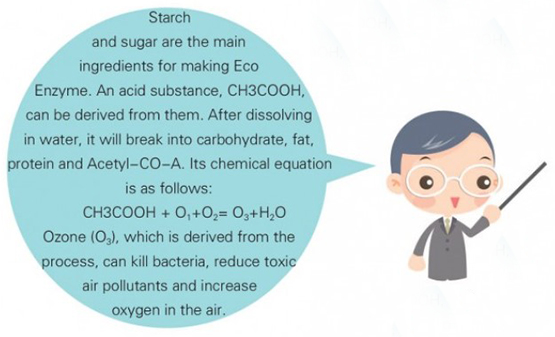
The Eco Enzyme counters the Greenhouse effect
Eco-Enzymes convert ammonia, NH3, to nitrate NO3, a natural hormone and nutrient for plants. They convert CO2 to the carbonate CO3, which is beneficial to all marine life. The O3 generated from this process will reduce the heavy metals in clouds and thus release heat from the earth.
There are endless benefits of this Earth-Saving Enzymes. NO3 in the plant's roots can feed animals, which will give their waste back to the plant as hormones and nutrition.
Agriculture applications
Replacing chemicals, enzymes can bio-organically fertilize the soil for healthy fruit & vegetable growing. They are natural hormones for plants and trees, as well as natural herbicide and pesticide, keeping the farmland free from infections and insects. They function as a natural:
Enzymes can cultivate sandy land to fertile farm land, keep the air on the farm clean and cool, and cleans impure water. Great for both residential and commercial applications.
Concentrated Eco Enzyme is a weed killer, but 1000x diluted it's perfect for plant and soil growth.
Since 1990 the market for organic food and other products has grown rapidly, reaching $63 Billion worldwide in 2012. This demand has driven a similar increase in organically managed farmland that grew at a compounding rate of 9%/yr.
As of 2019, about 70 Million hectares are farmed organically, representing only 1.4% of total world farmland.
House Hold applications of an EE product
Cleaner paste can be made from blended fermented fruit peel and baking soda. The paste works as a scouring cream, ideal for cleaning tough, oily stains in the kitchen such as those found on burned pots, air fryers and hood tops.
Enzyme fabric softener is a combo of enzyme cleaners, baking soda, water, and apple cider vinegar. Besides making clothes more tender and pliable, it also removes mildew odor. As there is no scent naturally, adding essential oils is the most natural way to add fragrance to the clothes.
To avoid using chlorine-based bleach, a natural bleach can be made from food grade hydrogen peroxide (H2O2), baking soda and lemon juice. H2O2 is a natural substance, water with an extra oxygen atom.
Soaking vegetables and fruits in diluted EE (2 tsp of EE + 1 ltr of water) for 45 minutes can remove pesticides, herbicides, chemicals, heavy metals, bacteria and parasitic ova. They will taste better afterwards.
Discover the miracle of eco-enzymes:
Reduce Pollution
Methane gas released from disposed garbage can trap 21 times more heat than CO2, and worsen global warming.
Save Money
Turn kitchen waste to DIY multipurpose house-hold cleaners.
Multiple Usage
Natural household cleaner; skin care; air purifier; detergent; car care; fabric softener; organic fertilizer, etc.
Anti-Bacterial, Anti-Fungus and Anti-Virus
Natural antiseptic for your home and body.
Purify Underground Water
Enzymes residue's underground flow and will eventually purify the river and sea.
Purify Air
Removes odor, toxic air released from smoking, car exhaust, chemical residues of household products, etc.
Natural pesticides
Repel mosquitoes, flies, ants, rats, or cockroaches, etc.
Prevent drainpipe blockage
Release residues stuck in the pipe of basins or toilet bowls.

![]()
INSTRUCTIONS for Preparation:
The EE has been developed by Dr. Rosukon from Thailand during the 1980's as a means to:
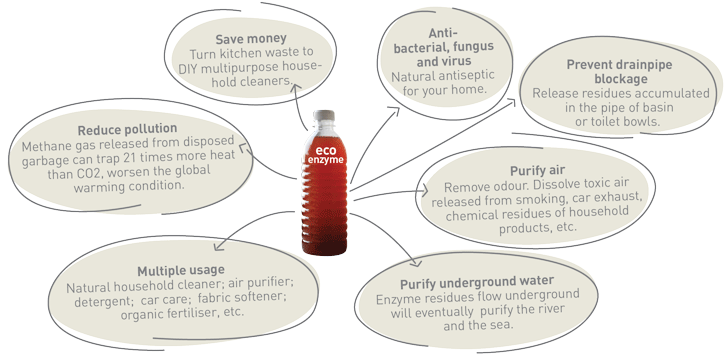
Decomposable waste thrown into the environment can be used to produce value added bio-products, which reduces the production of greenhouse gas. Garbage enzyme (GE) is one!
A study was done to evaluate enzyme activity and disinfectant potential of GE. The result showed that GE possesses protease, amylase and lipase activity, which reduced 37% of its total solids, 39% of its suspended solids and 99% of its pathogens. Now compare this result with various physical and chemical pre-treatment methods to improve the biogas production from the sludge digestion unit!
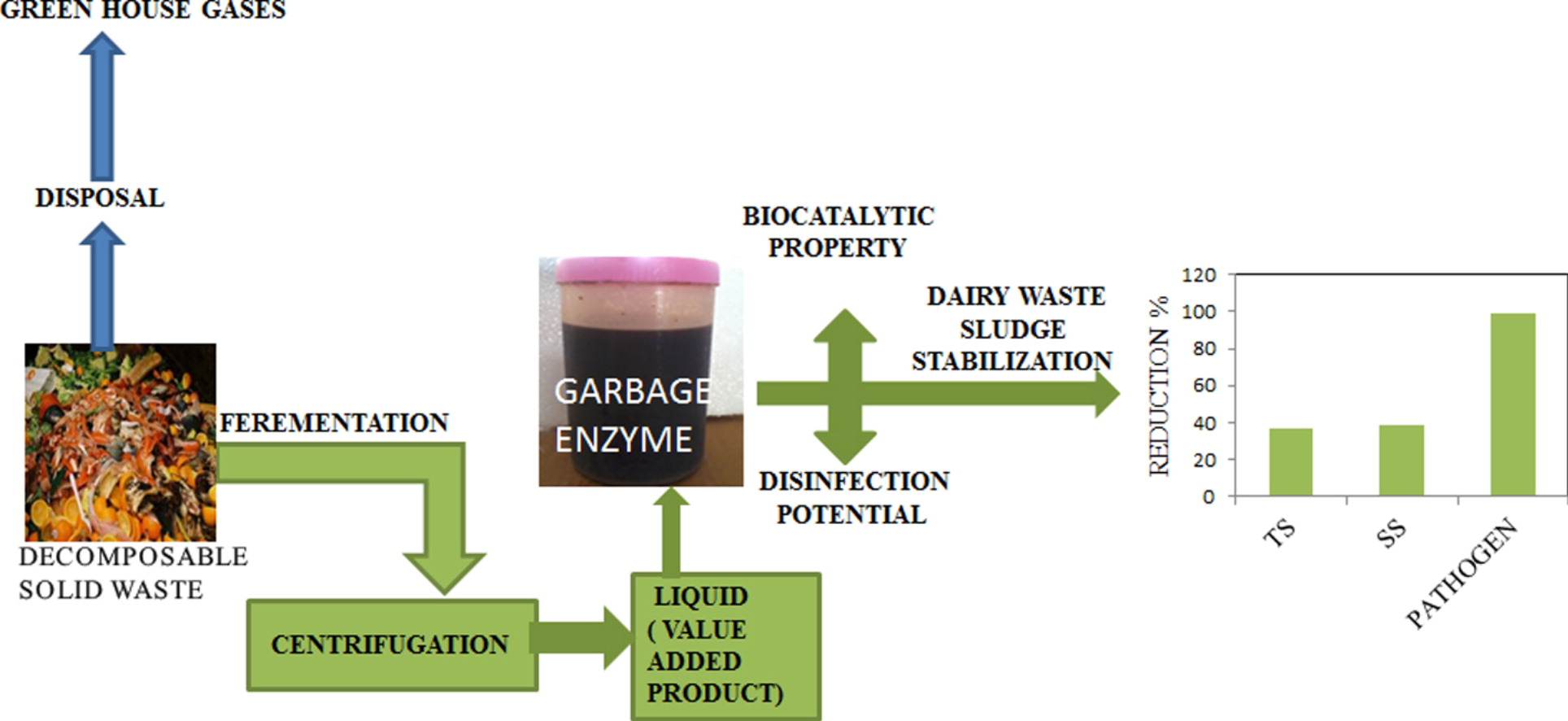
The GE's produced from pre-consumer organic waste containing multi hydrolytic enzyme activity help to solubilize the waste activated sludge. The continuous production of GE and its scaling up process need an optimized condition.
Hydrolysis refers to a chemical reaction wherein a molecule is broken down into its constituent parts by the action of water (H2O), usually with the help of a catalyst, like an enzyme. A hydrolytic enzyme is an enzyme that acts and behaves like a hydrolase. A hydrolase is an enzyme that speeds up the hydrolysis of a chemical bond.
A study was done to measure the effect of fruit peel composition and sonication time on enzyme activity:
GE produced from 6 g pineapple peels + 4 g citrus peels were pre-treated with ultrasound for 20 min. It showed higher hydrolytic enzymes activity. Simultaneously statistical optimization tools were used to model GE production with higher activity of amylase, lipase and protease, predicted to be 56.409, 44.039, 74.990 U/ml respectively at optimal conditions of (pH (6), temperature (37 °C), agitation (218 RPM) and fermentation duration (3 days). These optimized conditions can be used successfully for large scale production of Garbage Enzymewith higher hydrolytic enzyme activity:
